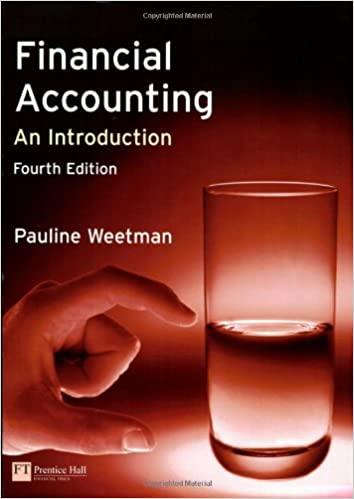Question
(1) Oxford Company has the following account balances: Cash, $40,000; Accounts Receivable, $28,000; Inventory, $12,000; Land, $110,000; Building, $100,000; Accounts Payable, $30,000; Short-term Notes Payable,
(1) Oxford Company has the following account balances: Cash, $40,000; Accounts Receivable, $28,000; Inventory, $12,000; Land, $110,000; Building, $100,000; Accounts Payable, $30,000; Short-term Notes Payable, $10,000; Bonds Payable, $80,000; Oxford, Capital, $170,000; Sales, $120,000; Salaries Expense, $40,000; Utilities Expense, $15,000; and Interest Expense, $5,000. The current ratio for Oxford Company is?
(2) Clover Department Store had a balance in its Accounts Receivable account of $730,000 at the beginning of the year and a balance of $770,000 at the end of the year. Net credit sales amounted to $6,375,000 and cost of goods sold amounted to $2,800,000. The receivables turnover for the year is?
(3) Rieger Company had $300,000 of current assets and $180,000 of current liabilities before borrowing $70,000 from the bank with a 5-month note payable. What effect did the borrowing transaction have on the working capital of Rieger Company?
Step by Step Solution
There are 3 Steps involved in it
Step: 1

Get Instant Access to Expert-Tailored Solutions
See step-by-step solutions with expert insights and AI powered tools for academic success
Step: 2

Step: 3

Ace Your Homework with AI
Get the answers you need in no time with our AI-driven, step-by-step assistance
Get Started


